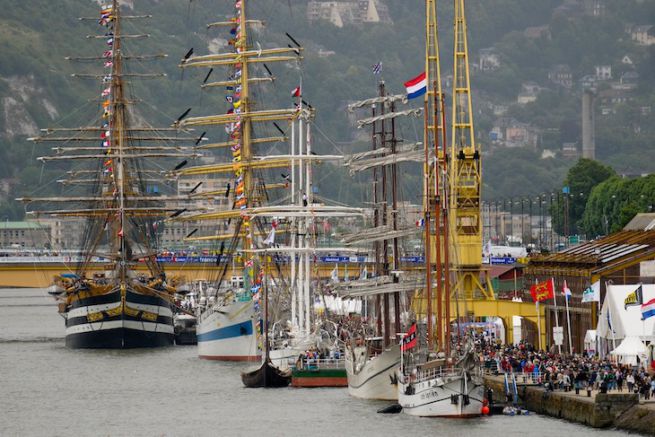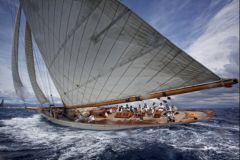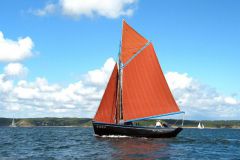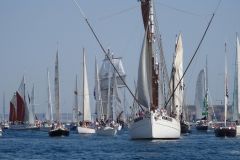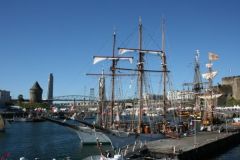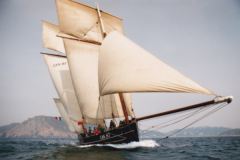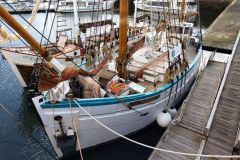Fifty of the world's most famous sailing yachts will be moored along the 7 km long quay of the Armada de Rouen. This major maritime and popular festival will be held from 6 to 16 June 2019 and welcomes millions of visitors each year. In view of the expected world and the boats present, it is difficult to be able to visit the entire fleet, which will be open to visitors. So here are some sailing boats not to be missed louper?!
Atyla
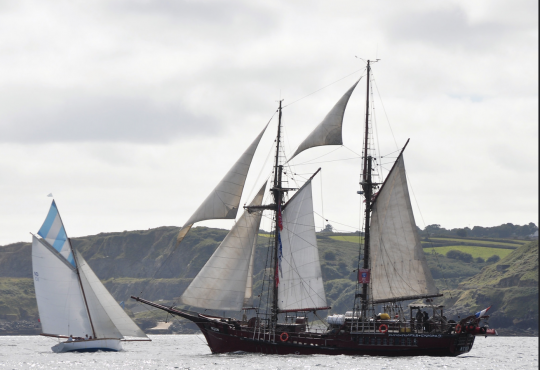
The Atyla was built from 1980 to 1984 according to the plans of Esteban Vicente Jiménez. The latter built the schooner in the traditional way, according to plans from the early 19th century. Its objective is to go around the world by retracing Magellan's itinerary (1519-1522).
Three shipyards are responsible for the manufacture of the ship. The first takes place in Vinuesa for two years and consists in particular in producing most of the structural parts, masts, furniture or sculptures. These are made from local woods.
In 1982, assembly continued in Lekeitio, at the Isuntza shipyard and was completed at the Celaya shipyard in Erandio, in the Bilbao estuary. Started under the name Taurus, it was finally launched on May 15, 1984 under the name of the oil company that financed it, Itsaso-Petronor. It then took the name Marea Errota, from 1984 to 2005, in reference to the tidal mill of its place of construction. It then became the ambassador boat of the Cantabria region, attached to the port of Santander, under the name Cantabria Infinita.
In 2013, the schooner became Atyla and sailed in the Mediterranean from the port of Badalona. Since 2014, the schooner has been used as a training ship on the European coasts.
Cisne Branco
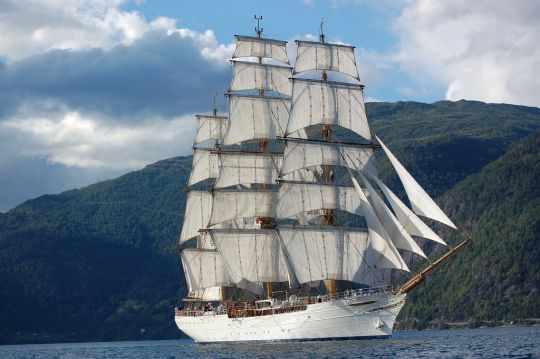
The Cisne Branco is the training ship of the Brazilian Navy, but also its ambassador ship. It was built in the Netherlands and handed over to the Brazilian Navy on March 9, 2000, in Lisbon on the occasion of the 500th anniversary of the discovery of Brazil. 500 years earlier, navigator Pedro Álvares Cabral left Brazil to arrive in Brazil.
Cisne Branco represents Brazil at national and international nautical events. He trains future sailors by sending up to 58 cadets on his long-distance trips.
El Galeon
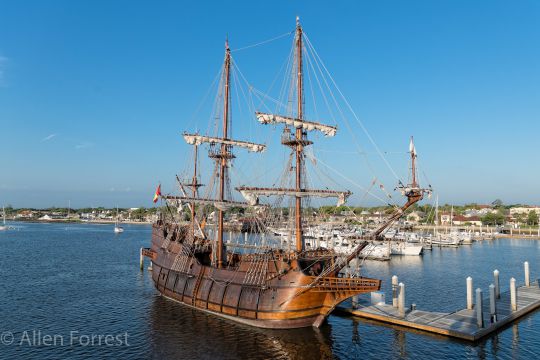
El Galeón or Galeón Andalucía is a replica of a 16th century Spanish galleon designed and built by Ignacio Fernández Vial, based on extensive historical research. He represented Spain at the 2010 World Expo in Shanghai as ambassador of the Autonomous Community of Andalusia.
At the time, this type of galleon of the fleets of New Spain, Tierra Firme and Manila traded during the 17th century from Spain with various ports in America and Asia.
Its rigging consists of three masts with 7 sails and a bowsprit. Its stern is decorated with the Esperanza de Triana, one of the most famous Catholic virgins in Seville. A replica also decorates the officers' square.
The structure is made of oak, iroko and pine wood with a fibreglass covering. Although it is a replica, it includes 21 e century, particularly to ensure safety on board.
El Galeon received the Tall Ship Award from the Spanish Sailing Federation.
The Frenchman
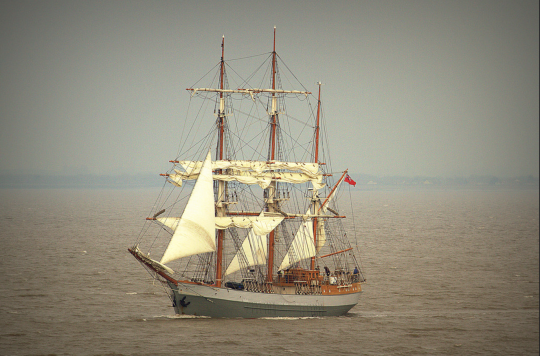
The Kaskelot (literally "sperm whale" in Danish) is a ketch with a double wooden hull, built in Denmark in 1948 for the Royal Greenland Trading Company. It operates as a supply vessel for Greenland, before being used as a fishing support vessel in the Faroe Islands.
In 1983, it was bought by the British Robin Davies who transformed it into a three-masted barque. This is how he made his first steps into film. From 1985, he appeared in many films until 2010: The Last Place on Earth (1985), Les Naufragé de l'île aux pirates (1900), Les Trois Mousquetaires (1993), Shackleton (2002) and Alice au pays des Merveilles (2010).
Bought in September 2018 by Bob Escoffier, it was renamed the Frenchman, in tribute to the former three-masted schooner of the first Charcot expedition (1903-1905). It is now used for the training of young sailors, but also for cruises aboard its 3 cabins.
Mir
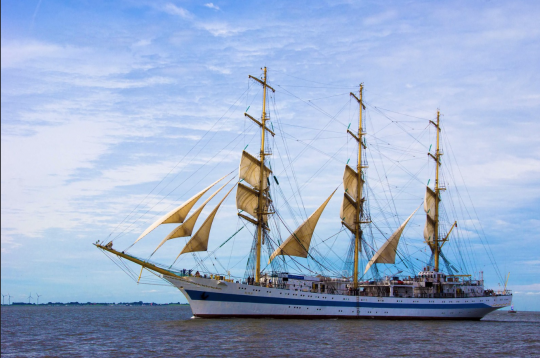
The Mir is a three-masted square mast built in 1987 by the Polish shipyards in Gdansk. Its name means Peace in Russian. It is known as the sea sprinter because it can reach a maximum speed of 19.4 knots. With its 2?720 m2 sail area, this training ship is now owned by the Academy of St Petersburg in Russia.
Sedov
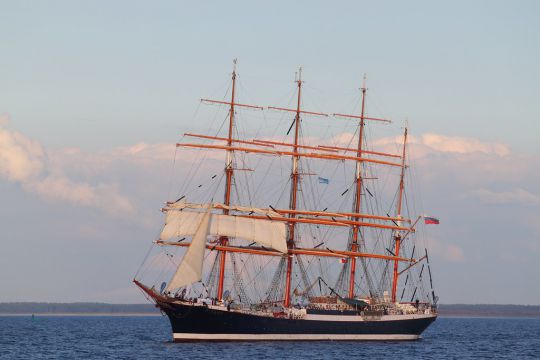
The Sedov or STS Sedov is a 117 m four-masted barque. It is the largest Russian sailboat and the largest sailboat training ship in the world. A German merchant ship when it was built in 1921, it was given to Russia in 1950 as war damage. It became an oceanographic ship and then a training ship.
After the fall of the Berlin Wall in 1989 and Latvia's declaration of independence in 1991, the Sedov left Riga for Murmansk, its new home port in the Barents Sea, free from winter freeze-up.
A training ship of the Murmansk Maritime University, he trains cadets (officer cadets), civilian sailors and fishing engineers from the Kaliningrad and Murmansk naval schools. With a crew of 65 sailors and 164 cadets, he sails for at least 3 months.
Shtandart
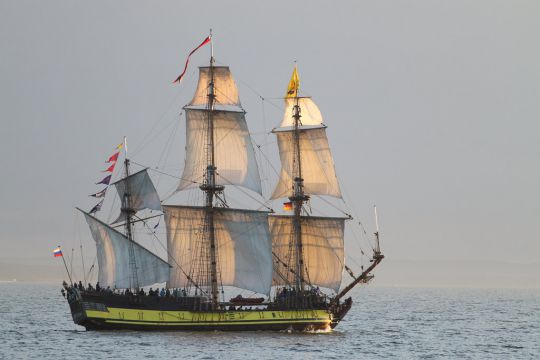
It is a replica of the Russian frigate Shtandart built in 1703 and inspired by Dutch and English ships. This historic ship became the flagship of the Russian fleet commanded by Tsar Peter the Great.
The construction of this identical frigate was carried out by a historian commissioned by the Hermitage Museum in St Petersburg and carried out by the Maritime Education Centre of St Petersburg as part of the Shtandart Project. Project to train young Russians in wooden shipbuilding and traditional sailing. This initiative was sponsored by the Russian and British governments, as well as by financial contributions from foreign donors.
It was built on the banks of the Neva River, within a former shipyard. It took 5 years to build, from 1994 to 1999.
Today, the ship is owned by the Shtandart Project of St. Petersburg, a Russian non-profit association that has turned it into a training ship and a museum ship.
Tenacious
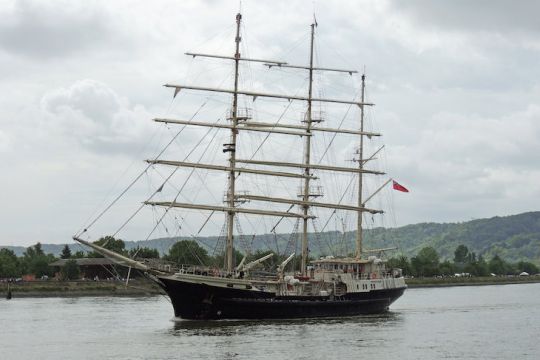
Built at Merlin Quay in Southampton, England and launched in 2000, the Tenacious is one of the largest wooden sailing yachts in the world. But this is not its primary quality. Indeed, the sailboat has been entirely designed to accommodate disabled passengers on board: visually impaired or blind or in a wheelchair. The door plates are written in Braille, the cabins have been specially fitted out, the deck has wheelchair stowage to allow people with reduced mobility to participate in manoeuvres.
Together with Lord Nelson, it is one of the only ships in the world designed to accommodate crews composed of able-bodied and disabled people.
Wylde Swan
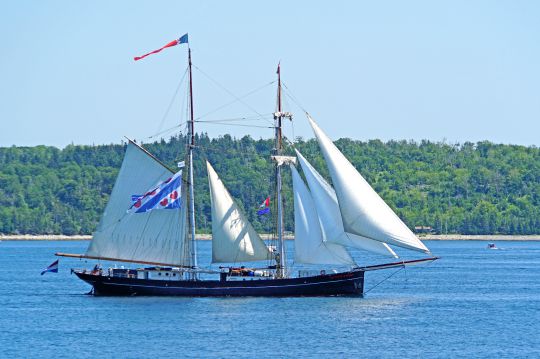
It was built in 1920 in Kiel, Germany, under the name Jemo, where it is used for herring fishing. Decommissioned at the end of 20 e in the 20th century, it often changes ownership before being converted into a schooner in 2010. Today it is the largest two-masted topsail schooner in the world.
